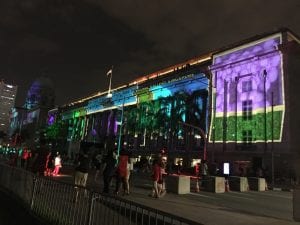I like museums. I like looking at how curators display artefacts or art or whatever they are working with, and how they create stories with them.
I took a visit to the Lee Kong Chian Natural History Museum, the other day. The museum is situated on NUS campus, and is free to students. It had a really impressive collection of animals and birds and bugs and what have you, preserved for people like me to gawk at them hundreds of years later behind a glass display case.
The second floor of the museum had a collection of taxidermied animals and birds, dedicated to displaying the collections of British colonial officers who had a strong hand in building the natural history field in Southeast Asia. I think the museum is doing some really great work — they discussed environmental issues rather vividly by including the plastic cups and cans they found in the whale whose skeleton they display — but the exhibition made me think about the relationship between the desire to classifying and categorizing nature with imperialism.
Soyo Lee is doing a residency at the NTU Centre for Contemporary Art at the moment. Her art is about natural history representations, particularly in South Korea, where Western naturalism and its system of classifying nature was introduced through Japanese colonialism. I went to her exhibit at the Gillman Barracks, and her exhibit could, perhaps, be mistaken for a laboratory of one of those colonial officers who had donated their collection to the Natural History Museum. It had nature dried and preserved and neatly categorized on a pristine laboratory table. A world reduced to a problem to be solved, unknown territory to be conquered by becoming known under the system of the ruling power.
Singapore’s Bicentennial is this year, and with it a lot of commemoration. For instance, Marina Bay is all lit up in a light festival to celebrate. But why do we base Singapore’s “bicentennial” on the year Stamford Raffles landed on Singapore, when there is a much longer history of the city that stretches back before Europeans came anywhere near the city?

walking near merlion park; everything lit up. can’t be very good for light pollution, come to think of it.
Then again, we Americans have our own tense relationships with history, though on the other end. I’ve heard people say that if the British Museum had to return everything they had back to the nations they colonized, they’d have basically nothing left, but the same questions of imperialism and power apply to American museums as well, particularly in Natural History museums or museums exhibiting cultural artefacts. Maybe it just comes down to the stories we are, and aren’t, willing to tell ourselves.


